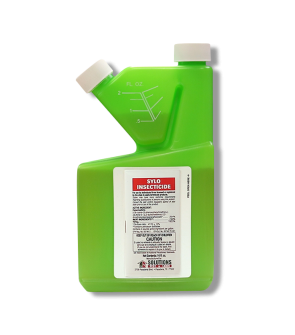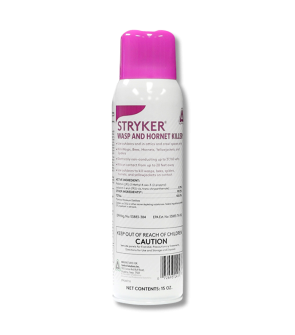Gain access to personalized product screening, the best pricing, rewards, and more!
Most Effective Products
How to Keep Wasps, Hornets, and Bees Out of Your Pool
This article is a professional guide to keeping stinging pests like wasps, hornets, and bees from landing in your pool. You will get complete control of wasp and bee infestations by using the recommended products and methods listed throughout this DIY guide. Follow the steps to remove these stinging pests and prevent future reinfestations in your yard and pool.
For homeowners with pools in their yards, summertime often means lounging by the pool or just spending time outside soaking up as much sun as possible. It also means facing consistent bees, wasps, and hornets flying around and floating in your pool water. This leads many homeowners to ask themselves the question, "How do I keep getting bees, wasps, or hornets in my pool?" The warm summer weather means these stinging pests seek water sources, which your pool readily provides.
In addition to a reliable water source, nearby ornamentals and patios support food and habitat needs for bees, wasps, and hornets. Bees and wasps often transfer the water from your pool to other colony members to create their nests. These stinging pests collect water when the thirst level is high in colonies or nests to cool down hives and for larvae to feed on.
From multiple cleaning efforts to possible home infestation, the main reason to keep wasps, bees, and hornets away from your property is because of their stingers. Unlike bees, wasps and hornets can sting multiple times without perishing. The best way to avoid unwanted stings and pests in your pool is to repel them from the yard by following the steps and recommended products throughout this DIY guide.
Remove Water Sources

Chances are wasps, bees, and hornets have deemed your pool their usual water source when there are frequent pests in the water or flying activities around the pool. Though not ideal, it would be best to temporarily drain pools until selected pesticides have dried on labeled application sites and pest activity has decreased.
Another route is investing in a pool cover when it is not used. A pool cover could be a plastic tarp or an automatic built-in cover. Either one of these options will need to cover each end and side of the pool effectively.
Once installed, these pests will be unable to reach your pool water. Ensure no holes, cracks, or crevices are within the cover; otherwise, dirt, leaves, hornets, wasps, and bees can still come through.
Relocate Ornamentals and Landscapes

The scent of flowers, along with the abundance of shrubbery, attracts bees, wasps, and hornets due to potential sources of food and nest sites. Having ornamental foliage and landscapes around your pool could increase the presence of these stinging pests, especially if certain types of flowers are near your pool, which pests like bees favor for nectar.
While it may seem overwhelming to relocate flowers, plants, shrubs, and small trees from the pool area, relocation might be your best option. Plant or relocate foliage at least 8 feet and more from the pool's edge, or move to another spot within your yard that people and pets do not significantly frequent.
Water the foliage before digging or removing it from its container. The soil should be saturated with no more than an inch of irrigation to avoid overwatering and remove the roots without harm. One at a time, remove the plants from their original spot or container until ready to be replanted. Plant roots can easily become dry and wither when exposed. When digging up established plants, make a circle around the plant from a distance of 12 inches.
Put the established plant into the hole, fill halfway with soil, and water again with an inch of irrigation. Give enough time for the watered soil to dry around the roots before placing the rest into the hole. Lightly press the soil around the transplant foliage with a glove-covered hand to avoid air pockets.
Take Away Nests

Regularly walk around your yard to look for bees, wasps, and hornet nests. As these stinging pests depend on water, their nests are likely close to your pool. Wasps, bees, and hornet nests are found outside in elevated areas like trees, shrubs, fences, utility lines, and around the home in concealed sites from window and door frames, attics, vents, and chimneys.
Each pest nest will have its share of differences, so it's important to note where they are located and what they look like. A hornet's nest is made from saliva and chewed wood formed into a football shape, which loosely hangs from a stalk. Wasp nests have a large, papery, open appearance with an upside-down umbrella shape. Bee nests like honey bees are often shaped like footballs or basketballs and are sometimes large with a textured paper appearance.
For best results, apply insecticide treatments in the evening since these pests are less likely to be active or in the nest at night. Before carrying out any form of bee, wasp, or hornet treatment make sure you are properly dressed with personal protective equipment (PPE) or for the utmost protection a professional bee suit.
We recommend using Stryker Wasp and Hornet Killer to eliminate stinging pest nests. This aerosol spray delivers a quick knockdown of wasps, hornets, bees, and their nests from a safe distance of 20 feet when spraying. To use, align the nozzle valve opening with the mark on the valve cup.
For wasps and hornets, you will hold Stryker Wasp and Hornet Killer upright and stand from a safe distance of 6 to 15 ft from the nest, but not directly underneath. Aim the nozzle valve opening toward the nest with the wind towards your back. Spray until the nest is thoroughly wet and on any pests on the nest when possible.
For bees, perform a sweeping motion while holding down the actuator to treat any active or agitated bees around the nest opening. Then, move forward to the nest opening and apply directly into the nest hole for 6 to 8 seconds.
Repel Them From Yard
Apply a residual insecticide within eaves, cracks, and crevices around your home to prevent bees, wasps, and hornets from entering your yard and creating suitable nests adjacent to your pool. Sylo Insecticide is a synthetic pyrethroid insecticide with an emulsifiable concentrate formulation that will kill pests upon contact and after it has dried. When applied, this product will last up to 90 days before another application is needed.
Perform a barrier treatment and spray around entry points like window and door frames, and along the foundation with a handheld pump sprayer.
Apply a 0.1% emulsion of Sylo Insecticide. You can do this by easily mixing 1/2 fl. oz. of Sylo Insecticide with 1 gallon of water.
To prepare the solution, pour half of the water into the spray tank, then add a measured amount of Sylo Insecticide, then add the remaining half of the water. Close the sprayer lid and shake until the solution is evenly mixed.
Spray your home's foundation in a low-pressure setting, 3 feet up and 6 to 10 feet out on the ground. You will also need to spray eaves, porch window frames, patios, garages, carports, fence lines, storage sheds, barns, and other residential structures, as well as trunks of woody ornamentals.
Keep children and pets off-treated areas until completely dry. Do not allow liquid, runoff, or spillage near your pool and other treatment areas.
Key Takeaways
Why Are Bees, Wasps, and Hornets Attracted to Your Pool?
- Wasps, hornets, and bees are attracted to large, open water sources such as your pool. Other factors that could attract them are adjacent ornamentals and sufficient crevices and cracks to create their nests.
How to Get Rid of Wasps, Bees, and Hornets in Pools
- You will need to make your yard unsuitable for bees, wasps, and hornets by applying a residual insecticide like Sylo Insecticide in outdoor entry points like eaves and window and door frames. Next, you will remove their nests by spraying them with Stryker Wasp and Hornet Killer, rendering them unusable to pests for future and current infestations. Any outdoor foliage surrounding your pool will need to be moved at least 8 feet or more to prevent pests from coming near the water.
How To Prevent Bees, Wasps, and Hornets From Visiting Your Pool
- Keep the entire perimeter of your pool free of foliage, and treat your home's perimeter, entry points, window and door frames, eaves, patios, trunks of woody ornamentals, garages, and patios with Sylo Insecticide every 90 days. Spray pest nests when immediately noticed and apply Stryker Wasp and Hornet Killer in the evening.









